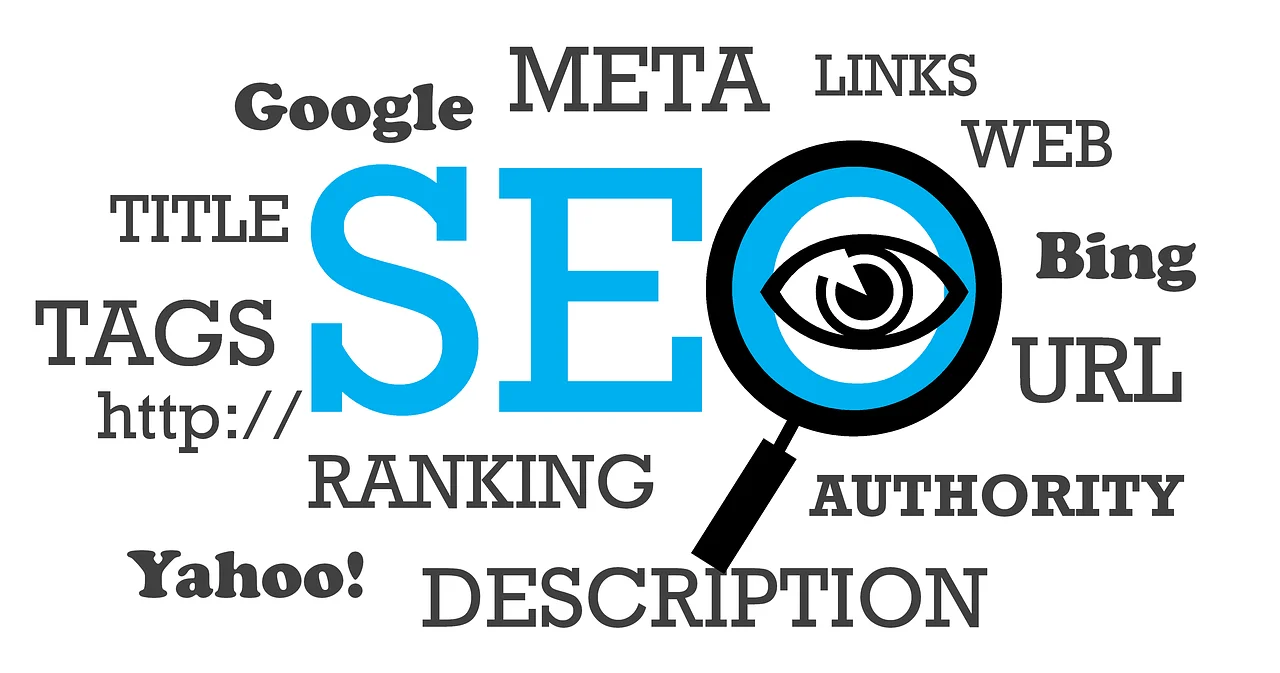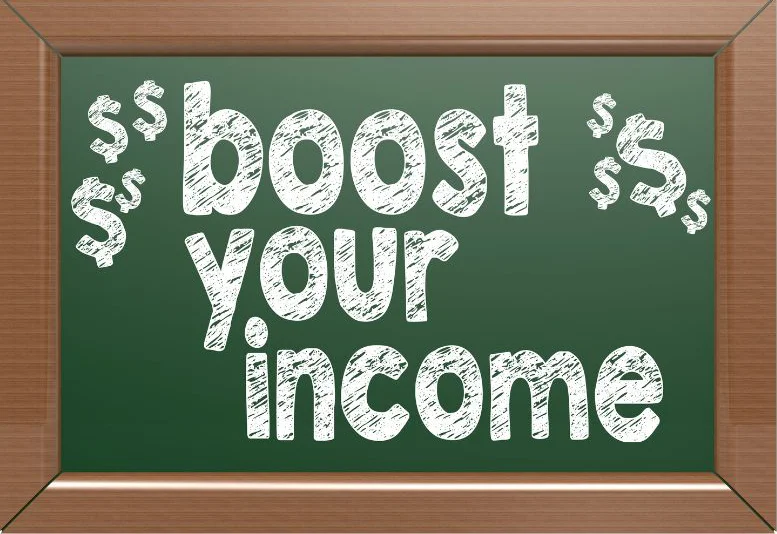To make a passive online income is the ultimate goal for many new freelancers and solopreneurs. What can be wrong with collecting money without doing anything at all? But is it realistic or an illusion?
Below, I will talk about two strategies that are generally considered to generate passive online income. They involve the use of your website as an advertising platform with AdSense and with affiliate links. But first, let’s do a quick reality check.
Passive online income – anything else than passive
Passive income is a term that has been around for years, and it has often been used to lure the gullible into questionable ventures. It is a misnomer that creates the illusion that you can generate income without working. Nothing could be further from the truth.
The only real passive income is an inheritance, and only if you didn’t do anything to speed this event up. Income derived from financial assets is probably the next closest thing to passive income. But then, you had first to make money to buy these financial assets. If you did not inherit the money, you would have had to work for it.
Rental income also does not qualify as passive income. Skills and time are required to manage and maintain a property. You can consider it passive income only when you outsource this task.
The main characteristic of passive income is that it is income derived from assets. And there is a disconnect in time between the actual work and the payment.
What is passive income?
I propose a new definition of passive income:
Passive income is income generated from assets created by someone who forgot he had worked to create these assets.
Generate passive online income with digital assets
Like in the analog world, where you need assets to generate passive online income, you also need assets in the digital world.
Here are some digital assets that will make you money in a more or less passive way:
- ebooks
- articles on online publications
- YouTube videos
- online courses
- advertising
- affiliate marketing
These digital assets live on different platforms: videos on YouTube, articles on Medium, Quora, and other platforms. Your blog or website will be the best home for affiliate links, advertising, online courses, and other products you have to sell. All these assets will make money only if enough potential clients know about them. Without active promotion, they are nothing more than dead wood despite all your efforts. There goes the passivity again.
Your website – home for your digital assets
Your website is the ideal marketing platform for all your digital assets. Here you can showcase your digital products and even any physical products you may have to sell. Visitors can see what you have to offer and buy and download your products if you set up your site with e-commerce functionality. Or you can direct your visitors to your YouTube channel or the relevant sales platform for your ebooks, like Amazon.
The most important thing for your website to generate passive online income is sufficient traffic. The amount of traffic you get is directly related to the economic success of your site.
Given sufficient traffic, you can make a decent amount of money month after month with the following two strategies.
Passive online income from AdSense
Once you sign up with Google AdSense and place a piece of code on your website, Google will show ads from various advertisers on your site.
You will get paid based on two different concepts, CPC and RPM.
CPC means Cost per Click, and you only get paid when someone clicks on an ad. What you get can vary from a few cents to several dollars per click and depends on how much an advertiser bids on a certain keyword. You have no control over this. It depends on your niche, the content of the ad, and the context.
RPM means Revenue per Mille = estimated earnings per thousand page views. The RPM amount can fluctuate from 0 (Yes, zero) to a pretty good dollar amount. The best I have seen so far was about $60, but it constantly changes throughout the day. You can see these numbers in the dashboard of your AdSense account. To a certain extent, you can influence this number by tweaking ad placement and sizing.
How much can you reasonably expect to make from AdSense?
Your earnings from AdSense depend entirely on the amount and quality of traffic your website receives. As several variables are at play, I can give you only a rough idea about what you can expect. Let’s assume you get 1,000 page views a day. With an estimated typical RPM of $3, you could expect to make $3 per day. And with the highest RPM I have seen so far of $60, it would be $60. But let’s face it, $60 is rather the exception than the norm, and you should not base your expectations on outlying numbers. As you can see, 1,000 page views a day is not even enough to cover the cost of running your site.
On top of the RPM earnings from simply showing the ads, you may be lucky that a visitor clicks on one of the displayed ads. It does indeed happen once in a while. A click can pay from a few cents to maybe even $10 if your site matches the keyword bids of an advertiser. Most keyword research tools will indicate how much a keyword is worth in terms of bidding. Again, these numbers are only indications as their value is constantly changing.
It is hard to predict how many of your visitors will click on ads. Many factors, like the relevance of ads to your content, attractiveness of the ads, ad placement, and sizing, will play a role. It is probably safe to assume that not more than 1 to 2 % of page views result in a click on average.
Ad blockers and general banner blindness, which many internet users have developed, are decisive factors for this low number. Another reason is that, more often than not, ads are not related to your content and are perceived more as a distraction and nuisance. Too many ads on one page hurt the user experience as well. But fortunately, you can at least control how many ads Google can show on your website.
Once your website receives page views of 10,000 or more, things look much better, and AdSense can be quite an attractive source of passive online income.
Affiliate marketing
Affiliate marketing is a form of online advertising where you place links to products of vendors of digital or physical products on your website. You will get paid a commission when a visitor clicks on an affiliate link on your website and purchases the advertiser’s product. The affiliate link contains a tracking code to make sure that you receive credit for this purchase. Depending on the vendor and the product, your commission can range from 1% to 30%. Typically, digital products like software subscriptions or web-hosting pay more than physical products. For example, in the case of web-hosting, your commission for a one-time referral can be as high as $100.
Where do you get affiliate links?
Many vendors have affiliate programs you can apply to join. You can usually find the info on the program on their websites. Look for products that are relevant to the general topic of your website. This will increase your success rate.
Amazon is running the most popular affiliate program. With Amazon’s huge product range, you have almost unlimited possibilities for advertising a product in your niche. Amazon’s affiliate program has a charming advantage. When a visitor clicks on one of your Amazon links and decides not to buy this particular product but buys even something entirely unrelated within 24 hours, you still get the commission for that transaction. The disadvantage of Amazon’s program is the low level of commissions, which ranges from 0 to 10%, depending on the product. Here you can find the table of commissions.
Another possibility is joining one of the specialized affiliate marketing networks that manage the affiliate programs of many vendors. One example is Share-a-Sale which is a very well-run platform. On their site, you will find hundreds of affiliate programs listed. There you can find all the details of commissions and performance of each affiliate program. The dashboard also gives you easy access to the marketing materials and codes provided by the vendors. To insert them into your website is a breeze.
You have total control over where you place the affiliate links. Place text links strategically within relevant content for maximum impact, like inside an honest product review. Thus, you are providing value to your visitors, and depending on the affiliate program, you may even be able to offer a special discount to your interested visitors. Of course, you can also use the graphic ads and banners that many vendors provide, ready to be placed on your website.
The dashboard gives you also an overview of all clicks and commissions generated by your website.
Please note that you have to disclose when you are using affiliate links. It is an FTC-mandated practice for all links you earn a commission from. Consequently, most sponsors of these programs require this in their terms and conditions as well.
Conclusion
Advertising through AdSense and affiliate marketing can generate earnings as close to passive online income as you can get.
The condition for this to work is, that you have a website with enough traffic. Both strategies work well only with a substantial number of visitors. And in the case of affiliate marketing, you have to attract visitors who are genuinely interested in the products you are promoting. Without converting visitors, there will be no income, passive or active.
It depends entirely on you, what level of passive online income you consider satisfactory. But I doubt that even a respectable number of 100,000 page views per month will be enough.
As building and maintaining a website of that magnitude is a lot of work, you may want to consider whether “passive income” is the right term in this context.






